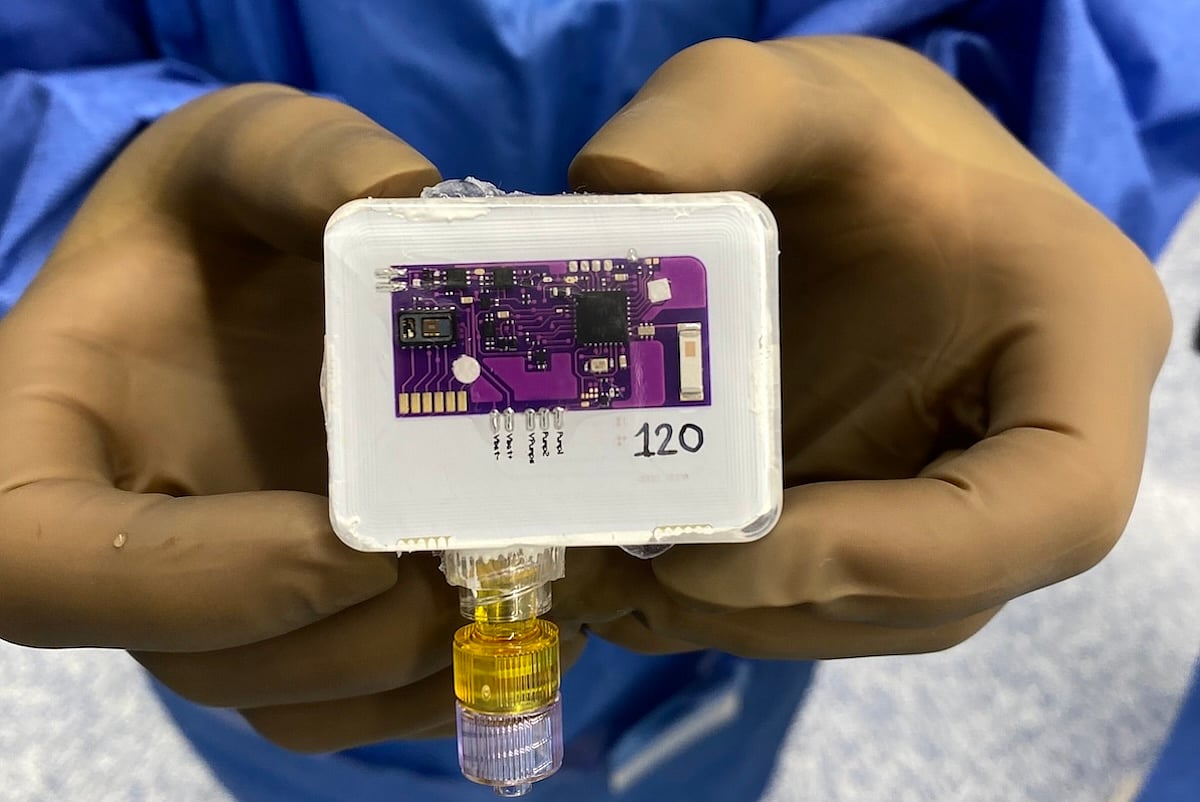Get Healthy!

- Dennis Thompson
- Posted October 24, 2024
Implant Might Prevent Opioid Overdose
Naloxone can save a person’s life by reversing a potentially fatal opioid overdose, and is now available as an over-the-counter medication.
Unfortunately, there’s a very significant catch.
A knowledgeable bystander needs to be on hand to deliver the drug, either by nasal spray or injection.
Now, researchers have developed an implant that might be able to automatically rescue people from an opioid OD without outside assistance.
The implant is designed to detect an overdose and rapidly deliver naloxone to the OD victim, researchers said.
The implant also relays an emergency alert to first responders, researchers added.
“During an overdose, people are often alone and unable to realize they are overdosing,” said researcher Robert Gereau, director of the Washington University Pain Center. “If someone else is present, they need access to naloxone -- also known as Narcan -- and need to know how to use it within minutes.”
“We identified an opportunity to save more lives by developing a device that quickly administers naloxone to at-risk individuals without human intervention,” Gereau added in a university news release.
More than 70,000 people die each year due to an opioid overdose, researchers said in background notes.
Naloxone works by attaching to the same receptors targeted by opioids, essentially crowding them out. This reverses the overdose and restores normal breathing.
In animal studies, researchers found that the implant does indeed deliver a lifesaving dose of naloxone upon detecting signs of an overdose.
The device, called the Naloximeter, uses a drop in oxygen levels as a signal of potential overdose. Overdosing on opioids leads to slow and shallow breathing and, in fatal cases, will stop breathing altogether.
Implanted under the skin, the Naloximeter sends a warning notification to a mobile app if it sense oxygen levels dropping below a certain threshold.
If the person doesn’t abort the rescue process within 30 seconds, the devices releases naloxone into their body.
Researchers implanted the device in the neck, chest or back of small and large animals. The implant worked as intended, and all animals fully recovered within five minutes of receiving naloxone.
The implant issues an additional call for emergency aid because naloxone’s effects are temporary, and overdose symptoms can return, researchers noted.
The new study was published Oct. 23 in the journal Science Advances.
The researchers have been awarded a patent for the device, and are working to perfect it while looking for industry partners.
“The Naloximeter is a proof-of-concept platform that isn’t limited to the opioid crisis,” said researcher Joanna Ciatti, a graduate student at Northwestern University.
“This technology has far-reaching implications for those threatened by other emergent medical conditions such as anaphylaxis or epilepsy,” Ciatti added. “Our study lays important groundwork for future clinical translation. We hope others in the field can build off of these findings to help make autonomous rescue devices a reality.”
More information
The National Institute on Drug Abuse has more on naloxone.
SOURCE: Washington University School of Medicine, news release, Oct. 23, 2024





